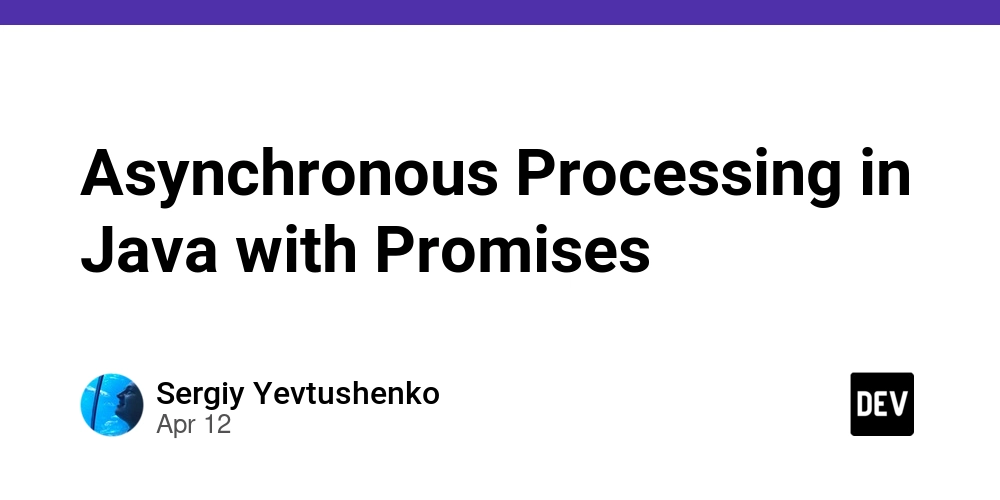Dev
2w
223

Image Credit: Dev
Asynchronous Processing in Java with Promises
- Asynchronous processing in Java historically considered complex and error-prone, with multiple approaches to tackle the issue.
- Promises with a functional style API offer straightforward code, minimal technical details leakage, and a simple mental model.
- Push and pull processing models dictate how pipelines receive messages for processing, with push model being event-driven.
- Promise
represents an asynchronous computation that can succeed or fail, with main states of pending and resolved. - Promise
has transformation methods like map() and flatMap(), and side effect methods like onResult() for async operations. - Functional style Promises API includes creating promises, transforming other monads into promises, and launching async operations.
- Patterns like Sequencer (sequential execution) and Fork-Join (parallel execution) efficiently implemented with Promise
. - Typical asynchronous processing patterns include Sequencer, Fork-Join (like all(), any(), allOf() predicates), error recovery, retrying, and circuit breaker.
- Pragmatica Lite Core Library offers implementations of core monads and utility classes for handling promises and asynchronous processing.
- Functional style Promise
simplifies asynchronous coding, with a focus on clarity, scalability, and easy reasoning about complex business logic.
Read Full Article
13 Likes
For uninterrupted reading, download the app